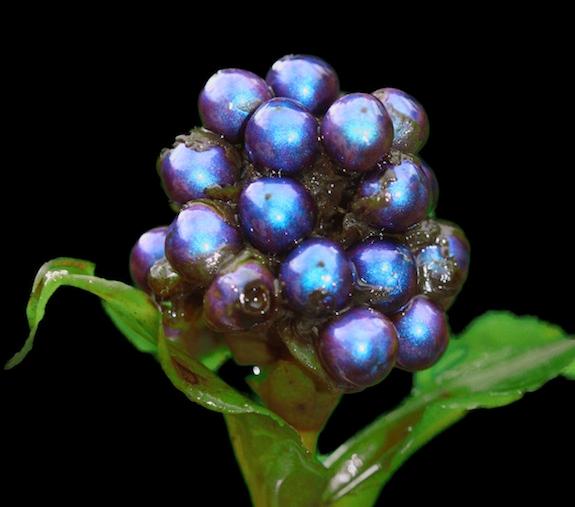Scientists discover the secret behind the world’s shiniest fruit
A bunch of the world’s shiniest fruit.
Scientists have discovered how Pollia, the world's shiniest fruit, retains its iridescent color for centuries.
The shimmering fruit is not actually juicy or particularly edible—it contains mostly hard seeds—but its brilliantly-colored blue and purple exterior, with tiny pointillist-like dots of red, green, and orange, has attracted scientists into trying figure out how it gets its shine.
With the help of UK Kew Gardens' Paula Rudall, researchers from the University of Cambridge tracked down a Pollia plant from Ghana in 1974 that is still as bright as ever and studied it thoroughly, Discover Magazine reported.
According to their findings, published Monday in the Proceedings of the National Academy of Sciences in the United States of America (PNAS), the fruit shines at a structural, cellular level.
More from GlobalPost: An odorless version of Asia's most pungent fruit?
The cells in the Pollia condensata are made up of walls of coiled-up cellulose strands that reflect light, Nature explained. The measure of the spaces between the strands allow light to reflect at different wavelengths, which is responsible for the fruit's iridescence.
“The optics are impressive,” said Silvia Vignolini, a physicist at the University of Cambridge and one of the authors of the study. “There are no previous examples of this in nature. It is 10 times more intense and bright than any color achieved with a pigment."
Though the concept of structural color has been found in animals—like in peacock feathers, beetle carapaces and butterfly wings—this is the first instance of structurally built-in color in a fruit.
Scientists speculate that the intensity of the color may be the plant's adaptation to get birds to eat the fruit and spread the seeds, New Scientist reported.
The article you just read is free because dedicated readers and listeners like you chose to support our nonprofit newsroom. Our team works tirelessly to ensure you hear the latest in international, human-centered reporting every weekday. But our work would not be possible without you. We need your help.
Make a gift today to help us reach our $25,000 goal and keep The World going strong. Every gift will get us one step closer.
